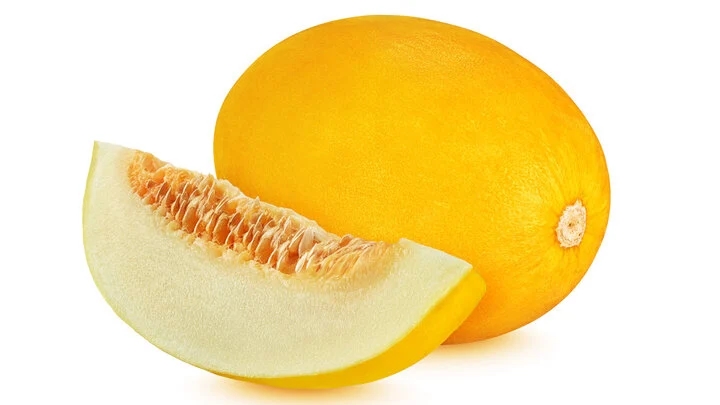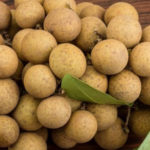Selecting a perfectly ripe and sweet cantaloupe can be a challenge, and many people wonder whether they should choose one with or without its stem. This question arises because some believe that observing the stem is the key to choosing a sweet and tasty cantaloupe.
Should You Buy a Cantaloupe With or Without the Stem?
According to cantaloupe farmers, to select the sweetest and most delicious cantaloupe, it is best to choose one without the stem. The stem of a cantaloupe serves as a natural indicator of the fruit’s ripeness.
When a cantaloupe is mature and naturally ripe on the vine, the stem tends to dry out and detach from the fruit naturally, leaving a shallow, smooth, and round indentation with a serrated edge. This indicates that the cantaloupe has reached its optimal ripeness and is ready to be harvested.

Should you buy a cantaloupe with or without the stem? (Image: Tasting Table)
A cantaloupe that has naturally detached from its stem is a sign that the fruit is fully ripe and at its sweetest. These cantaloupes typically have a rich flavor, a delicate aroma, and tender flesh.
On the other hand, if a cantaloupe is harvested prematurely, the stem will still be green and firmly attached to the fruit. This indicates that the cantaloupe may not be fully ripe, and its flavor will likely lack sweetness.
When choosing a stemless cantaloupe, carefully inspect the surface of the fruit to ensure it is free from bruises, cracks, or signs of over-ripeness.
Other Tips for Choosing a Sweet Cantaloupe
In addition to observing the stem, there are a few other tricks to help you select a sweet and tasty cantaloupe.
Color and Shape
The color of a cantaloupe is also an important indicator of ripeness. A ripe cantaloupe will have a bright yellow color, consistent throughout, with no green patches. The shape should be evenly round, with a balanced head and tail, avoiding any misshapen or indented sides. Cantaloupes with a symmetrical shape tend to have better flavor and softer flesh.
Tap the Cantaloupe
Another way to test the ripeness of a cantaloupe is to gently tap its rind. If you hear a deep, hollow sound, it indicates that the cantaloupe is ripe and has thick flesh. Conversely, if the sound is dry and hard, the cantaloupe may be unripe or overripe, compromising its sweetness.
Inspect the Cantaloupe’s Rind
Look for cantaloupes with thick, dry rinds that are slightly bumpy rather than smooth and flat. The rind should be uniformly yellow, with no other colors. When you gently press the rind, it should have some give but not feel too soft. A hard rind indicates an unripe cantaloupe, while a very indented one may be rotten.
After purchasing cantaloupes, you can further test their quality by placing them in the refrigerator. If, within a few hours, you notice the rind softening, developing dark spots, and rotting, it indicates the presence of preservatives. For your health and safety, it is best not to consume cantaloupes with these signs.
How to Store Cantaloupes
Room Temperature Storage: If you buy a ripe cantaloupe and plan to consume it within a few days, keep it at room temperature. Room temperature helps retain the cantaloupe’s sweetness and flavor. However, avoid placing it in areas with high temperatures or direct sunlight.
Refrigerator Storage: If you wish to store cantaloupes for a more extended period, place them in the refrigerator’s crisper drawer. Wrap the cantaloupes in plastic wrap or put them in a sealed plastic bag to prevent moisture loss and keep the flesh from drying out.
Source: VTC News
Is Refrigerated Leftovers Linked to an Increased Risk of Cancer?
Dr. Lam Van Man, Head of Research, Development and Technology Transfer Department of the Institute of Safety Food, has warned of the risk of food poisoning when reheating leftovers from the refrigerator. But what should we be aware of when it comes to the possibility of these leftovers causing cancer? Here, we explore what the experts have to say on the matter and offer some tips for safe eating.



































